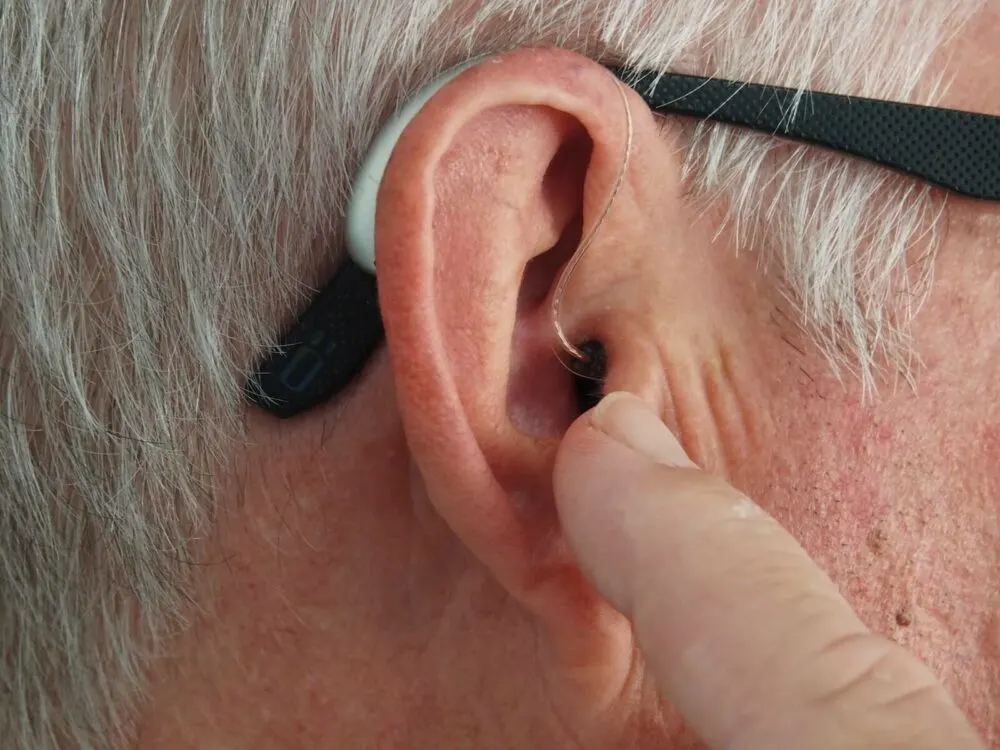Bone conduction headphones are a relatively new technology quickly gaining popularity. So what are bone conduction headphones, and how do they work? Bone conduction headphones have many pros, including no ear wax build-up or infections, and they can be helpful for people with tinnitus.
They also have some other benefits over traditional headphones. However, they also have some cons, such as low sound quality and battery life. Ultimately, whether or not bone-conduction headphones are right for you depends on your individual needs and preferences. Check out the pros and cons of bone-conduction headphones in more detail.
What are bone-conduction headphones?
Bone conduction headphones are a type of headphone that transmits sound vibrations directly to the inner ear through the bones of the skull. This contrasts traditional headphones, which transmit sound vibrations through the air to the eardrums. Sounds scary? It shouldn’t be!
How do bone-conduction headphones work?
Bone conduction headphones use tiny transducers to convert electrical signals into mechanical vibrations. These vibrations are then transmitted through the bones of the skull to the cochlea, bypassing the eardrums entirely.

In other words, bone-conduction headphones allow you to hear the sound without actually plugging anything into your ears. This is why they can be an excellent option for some people with hearing loss, who may be unable to use traditional headphones without experiencing discomfort or damage.
Bone Conduction Headphones Pros and Cons
Let’s take a closer look at the pros and cons of bone-conduction headphones and explain who should and shouldn’t buy them.
Bone conduction headphones Pros
Let’s get started with the pros:
No ear wax or infections
One of the main benefits of bone conduction headphones is that you don’t need to plug anything into your ears, so there’s no risk of infections or ear wax build-up. This can be a big plus for people prone to infections or who have trouble cleaning their ears properly.
Keeping your ears fresh and healthy is essential, and for some people, traditional headphones can be a breeding ground for bacteria and wax. Bone conduction headphones offer a great alternative in this regard.
Useful for people with tinnitus
Bone conduction headphones can also be helpful for people with tinnitus or ringing in the ears. Many different things, including exposure to loud noise, age-related hearing loss, and certain medications can cause tinnitus.
Because bone conduction headphones don’t rely on the eardrums to transmit sound vibrations, they can be an excellent option for people with tinnitus who find traditional headphones uncomfortable or ineffective.
This doesn’t mean you can crank up the bone-conduction headphones to full volume and expect your tinnitus to disappear, but they can be a valuable tool for managing the condition.
You can hear your surroundings.
Another benefit of bone-conduction headphones is that you can still hear your surroundings clearly while wearing them. This can be great for people who need to stay aware of their environment at all times, such as cyclists or runners.

Being aware of your surroundings is essential, and with traditional headphones, you can often miss important sounds while wearing them. Bone conduction headphones allow you to stay connected to your environment without sacrificing sound quality or privacy. Open-back headphones are similar, but you still put them over your ears.
Useful for people with hearing loss
Bone conduction headphones can also be an excellent option for people with hearing loss, as they allow you to hear the sound bypassing the external ear. If you wear hearing aids, bone-conduction headphones can be a great way to get even more amplification and improve your listening experience.
The design allows you to wear both hearing aids and bone conduction headphones simultaneously, which can be a big plus for people with this hearing loss. Wearing regular headphones has always been difficult for people with hearing aids, as the two devices often don’t work well together.

Comfortable fit
One of the best things about bone-conduction headphones is their very comfortable fit. This is partly because they don’t go inside your ears, so there’s no risk of them falling out or becoming uncomfortable after extended use.
Bone conduction headphones look more like glasses or a headband, so they’re easy to adjust and fit snuggly against your skull. You don’t have to worry about them slipping down your ears or becoming too tight over time.
No sweat or heating problems
Another benefit of bone-conduction headphones is that they don’t cause your ears to sweat or heat up as traditional headphones can. This is a big plus for active people who like to work out while listening to music.
Heating and sweating can be a significant issue with traditional headphones, as they often trap heat against your skin with materials such as leather and plastic.
This can not only be uncomfortable but also lead to irritation and headaches. Bone conduction headphones solve this problem by allowing air to circulate freely around your ears.
Difficult to lose
Bone conduction headphones are also difficult to lose, as they are wireless but bigger than traditional earbuds. This is because bone conduction headphones have a larger transducer or the headphone part that transmits sound vibrations to your bones.
If you ever lost an AirPod during your sleep, you’ll be happy to know that bone conduction headphones are much harder to lose. They also have a built-in strap, so you can’t lose one if you try.
The downside is that they may not be as portable as other wireless headphones, but their size makes them less likely to get lost.
Waterproof models available
If you’re looking for a pair of headphones that can handle a little water, bone-conduction headphones have you covered. Several waterproof models are on the market, so you don’t have to worry about them getting wet or damaged.
Just be sure to read the reviews before purchasing, as some waterproof models may not live up to expectations regarding sound quality and durability.
Bone conduction headphones cons
Now let’s check out the cons of using bone-conduction headphones.
Lower sound quality
One of the main issues with bone conduction headphones is that the sound quality isn’t as good as traditional headphones. They rely on vibrations to transmit sound rather than air like regular headphones do.
This means that bass and treble sounds may not be as clear when listening to music or watching videos. If you’re looking for headphones for audiobooks or podcasts, bone-conduction headphones will work just fine. But if you want high-quality sound, you may want to stick with traditional headphones.
More expensive
Another downside of bone-conduction headphones is that they can be more expensive than other wireless headphones. This is because they use different technology than your average earbuds, so more research and development go into making them.
Additionally, because they’re still a relatively new product on the market, there aren’t as many options to choose from when it comes to price. You can expect to pay anywhere from $60 to $200 for a good pair of bone-conduction headphones.
You can’t buy a pair for $10-20 like you can with traditional earbuds.
Low battery life
We mentioned that bone conduction headphones are wireless, a significant convenience. However, one downside of wireless headphones is that you must recharge them often.
This is because wireless headphones rely on a battery to work, and the more features they have (such as noise-cancellation), the shorter the battery life will be.
This can be a problem with bone conduction headphones, as the battery is in the earpiece that goes against your skull. This means you may not get more than five hours of use out of them before recharging.
Sound leakage in both directions
Another issue with bone-conduction headphones is that they can leak sound in both directions. This means that if you’re listening to music at a high volume, people around you can hear it, too (Open-back headphones can be loud too). Don’t use them in libraries or on public transportation if you want to keep your music to yourself.

And because there’s no isolation from the outside either, you will be able to hear what everyone around you is saying as well. Do you live in a noisy neighborhood? Bone-conduction headphones might not be the best choice for you.
It can still cause hearing loss.
Even though bone conduction headphones are designed to be safer for your ears than traditional headphones, they can still cause hearing loss if used at high volumes for long periods.

Keep this in mind if you’re thinking about using bone-conduction headphones for hours at a time – just because they’re safer doesn’t mean you can abuse your ears without any consequences.
Who should buy bone-conduction headphones?
Now that we’ve gone over the pros and cons let’s look at who should buy bone-conduction headphones.
Bone-conduction headphones are a great alternative if you have trouble with the wax build-up in your ear canal or often get infections. Additionally, bone-conduction headphones can be a great way to reduce the ringing if you suffer from tinnitus (a condition that causes ringing in the ears).
If you’re a swimmer, cyclist, runner, or any other type of athlete, bone conduction headphones are a good choice because they’re sweat and water-resistant. And finally, if you have hearing loss in one or both ears, bone-conduction headphones can significantly improve your listening experience.
Now, if you’re on a tight budget or don’t need all the bells and whistles that bone-conduction headphones offer, you may want to stick with traditional headphones. They’re cheaper, have better sound quality, and come in various styles.
Avoid bone-conduction headphones at all costs if you’re an audiophile or want to use them for music production, monitoring, or mixing. Also, if you need privacy or live in a noisy area, bone-conduction headphones might not be your best option.
The bottom line
At the end of the day, bone-conduction headphones have pros and cons. So before you go out and buy a pair, make sure you know what you’re getting into.
But if you think the pros outweigh the cons, they might be a good option. Just remember that they’re not perfect, and there are some situations where they might not be the best choice.
Let us know in the comments if you’ve tried bone-conduction headphones and your thoughts!
Clement Glenford Steen
Friday 23rd of December 2022
Is there a problem for your eardrum with no ear wax?
Wayne Davis
Tuesday 26th of April 2022
Bone conduction earphones are great for watching TV if you are hard of hearing, however, they must be low latency and the transmitter must be low latency, otherwise you will get out of sync feedback as you hear both through your ears and through the bones. They work great if low latency.
Stuart
Monday 28th of February 2022
In your article you say that they are connected by a strap. Does that mean there is no wiring connection between the 2 ear pieces and the strap count then be removed if desired? Of course this would be dependent on the weight distribution of the design (unlike your main illustration, some have the main body vertical rather than horizontal, which would be more conducive to not having a strap). Cheers.
Descriptive Audio
Tuesday 1st of March 2022
Hi Stuart. It really depends on the brand and model. Most bone conduction headphones have a connection between the 2 sides and it can't be removed.